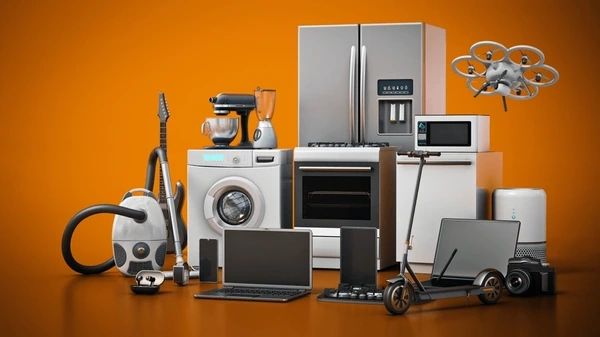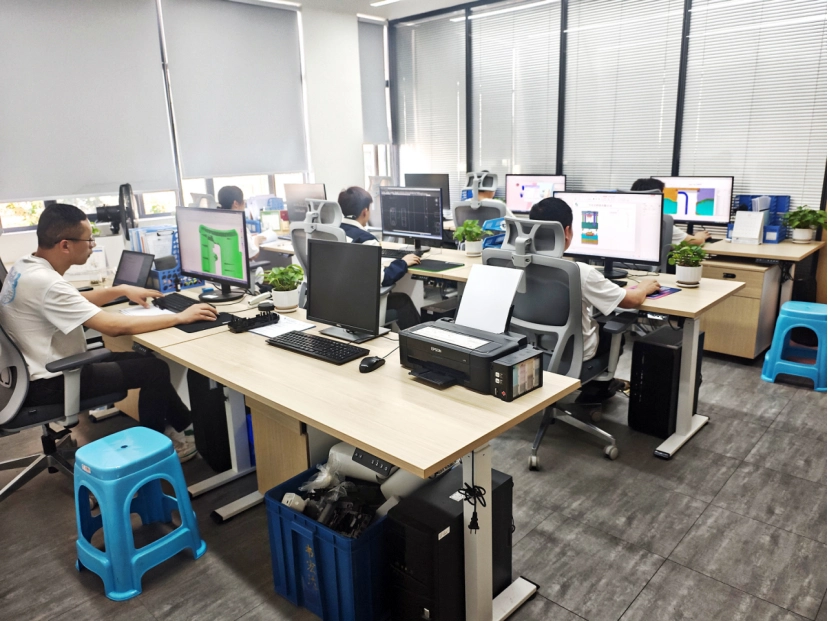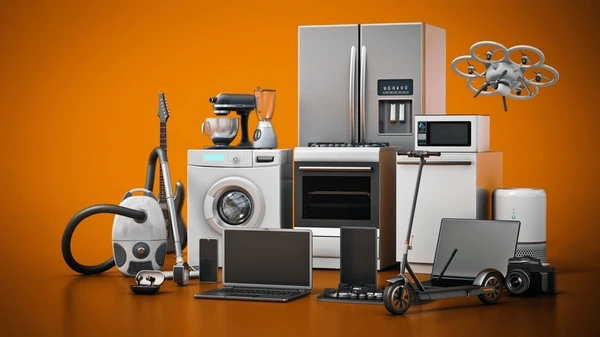Brainstorming
Brainstorming is a big first step in making consumer electronics. It sets up the whole project by matching ideas to what the market wants. During this phase, team members have lively chats. They figure out the project’s goals, who it’s for, and what cool features it might have. Talking over plans and ideas early is super important.
This step isn’t just about dreaming up new stuff. It’s also about checking if those ideas work by looking at market trends and competitors. In the fast-changing world of consumer electronics, knowing what’s hot now and guessing what’s next is key.
Developing a Product Concept
Once a solid idea is picked, it’s time to turn it into a real plan. This stage, called product development, builds the base for the whole process. It includes making early models like 3D drawings or printed circuit board (PCB) layouts.
A PCB model shows a 3D view of the product. It helps see how parts fit, like inside a case. Engineers make sure every piece, like the battery or board size, fits just right. This keeps the design pretty and practical.
This phase also thinks about how users will feel using the product. It mixes in neat features to make sure the final product works well and looks great to buyers.
Crafting a Detailed Project Timeline
A clear timeline keeps consumer electronics projects on track. A detailed chart, like a Gantt chart, helps a lot, especially with tight deadlines. Engineers look at each task’s size and timing. They add extra time for possible hiccups.
Smart teams plan for delays when setting deadlines. This helps avoid problems like supply shortages or shipping issues. Regular check-ins keep everyone on the same page. Clear talks throughout ensure all team members know what’s happening.
The Development Process

Hardware Design and Prototyping
PCB Design and Component Selection
At this point, engineers start grabbing parts from trusted suppliers to keep quality high. A big part of this stage is putting together key pieces, sometimes even whole setups. A custom PCB design is the heart of any electronic gadget.
The R&D team uses fancy software to tweak PCB layouts for big production runs while keeping performance strong. They make test samples to check before starting full production.
Mechanical Enclosure Design
Mechanical engineers build the product’s outer shell. They focus on how it works, feels comfy, and looks nice. The casing needs to handle heat and bumps while staying good-looking.
Prototypes get tough tests to check how they hold up in real life. Engineers make sure these test models are strong, last long, and work well before making lots of them.
Software Development Lifecycle
Embedded Firmware Programming
Firmware makes the hardware work right. Coders write programs to control sensors, screens, motors, or wireless parts in the device.
Application Layer Integration
Alongside firmware, software folks create apps or screens users interact with. This coding ensures the device is easy to use and works smoothly with its hardware.
Launching a Test Batch
Building Engineering Validation Test Units (EVTs)
The first batch puts PCBs with chosen parts into almost-final units. This step includes buying parts, assembling the PCB, and making the first devices.
Conducting Functional Testing and QA Checks
Each prototype gets strict tests to spot flaws or issues. This checks hardware for problems, ensures parts work together, and confirms the device meets the client’s needs.
Software loading happens here too. It includes adding the operating system, drivers, and other needed programs to check how the system runs.
Gathering Feedback from Early Users
Feedback from early users leads to final tweaks before big production starts. Based on what users say and test results, changes improve how the device works or fix any weak spots.
Certification Testing in Consumer Electronics Development
Getting the right approvals makes a product ready for markets like North America or Europe. Depending on the project, certifications like FCC, UL, or EU standards might be needed. Testing early avoids pricey redesigns later.
Early tests help dodge big losses. Knowing the device’s category early makes certification smoother.
Preparing for Production in Electronics Product
Finalizing the Bill of Materials (BOM)
Before making tons of units, engineers lock in every part’s details in a BOM document. This keeps every unit the same.
Selecting Manufacturing Partners and Facilities
Good production needs trusty partners with proven skills. At Silkbridge, over 30 million plastic injection parts are made each year. They use advanced machines from 180-ton to 1200-ton for all kinds of uses.
The facility handles many materials, like thermoplastics (ABS or PC) and medical-grade silicone.
Implementing Quality Assurance Processes
Quality checks happen at every step—from checking raw materials to using auto-inspection tools after assembly. Advanced gear ensures parts meet tight size standards. This keeps quality steady even for huge batches.
3 Most Common Issues You May Face
Component Sourcing and Availability
Supply chain ups and downs can slow projects. Parts availability can change, causing extra costs or redesigns if backups aren’t planned.
Integration of Hardware and Software
Hardware and software not matching up can cause trouble. Mixing them without careful planning, especially with new tech, can lead to surprises.
Regulatory Compliance and Certifications
Dealing with global rules takes know-how. Electronics need to meet standards, and delays can happen if pre-compliance steps aren’t taken early.

Developing a New Electronics Product from Silkbridge
At Silkbridge, teamwork and openness drive the whole process. From idea talks to prototyping with CNC machining or 3D printing, to mold-making with 0.01 mm precision, they offer full solutions built for scaling up.
After tweaks, mold-making starts for plastic injection. High-performance CNC machines give smooth finishes vital for consumer-grade casings.
Mass production uses robotic automation for steady quality across millions of units yearly—whether smart home gadgets or medical tools ready for global e-commerce.
- WhatsApp: +86 18122838771
- Phone: +86 18122838771
- Email:contact@silkbridgeltd.com
FAQ
What Are the Main Stages of Developing Consumer Electronics?
The key steps are brainstorming ideas, shaping concepts, setting timelines, building hardware and software, testing batches, getting certifications, and prepping for mass production.
How to Measure Project Success?
Success means hitting function goals, sticking to schedules and budgets, passing certification tests, getting high production yields, and earning good user feedback after launch.
How Many People Are Needed for Full-Cycle Consumer Electronics Development?
A typical team has electronic engineers for PCBs and firmware, mechanical designers for casings, software coders for interfaces, QA testers for checks, supply chain managers for parts, regulatory experts for certifications, and project managers to keep it all on track.



